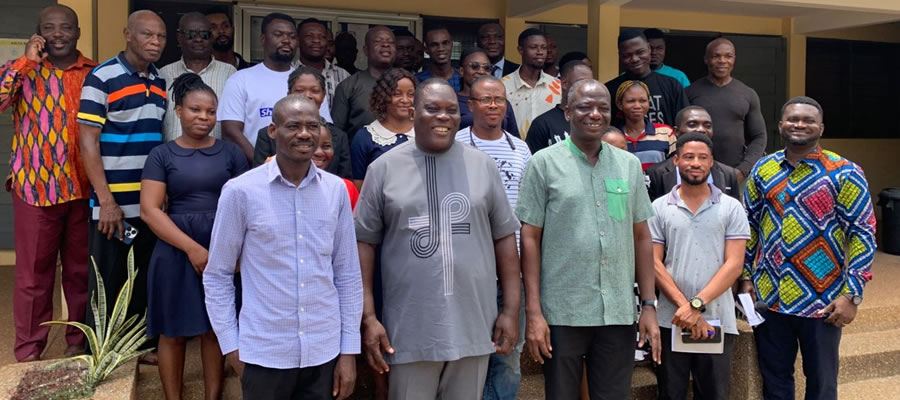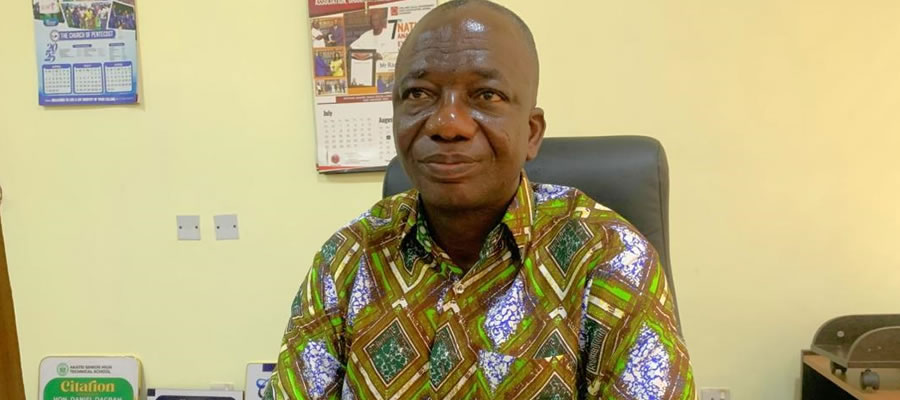

The District is mainly at the subsidence level of which about 95% of the population workforce is engaged in subsistence farming. These fanners cultivate cash or and food crops such as maize, cassava, sweet potato, cowpea. okro. groundnut, tomatoes, garden eggs, other leafy vegetables and non-traditional crop like pineapples, mango, cashew and palm trees.
Commercial Farming
Less than 5 % of the population is engaged in commercial cultivation. PARAM FARMS and TONGU FRUITS are producing Asian vegetables and pineapple respectively at commercial level for local and international market. Again, Moses Davor and Agbeworza at Dagbamate and Ashiagborvi respectively are cultivating mangoes on commercial scale for domestic and external markets.
The District has a vast cultivatable land but less than 40% is cultivated.
Therefore, the District has a very good potential for the development of commercial agriculture.
Crops
Competitive Advantaged Crops
Sugarcane
Reference to 1978 Feasibility Report by Tate and Fyne Technical Services/ Taylor Woodrow International Limited proved that the soils and climate in Akatsi District are favourable.
Soil and topographical survey also defined a gross area of 12,500Ha land available for Sugar cane production.
Mango
According to Horticultural export Industry Initiative (HF.II) practical baseline survey carried out for mango production in Southern Volta. Akatsi is the most suitable place for mango production in the minor season. The well spelt out drought, between the minor and minor season is a key indicator, which helps mango inflorescence
Black Berry (Velvet Tamarind)
The plant (atitoe ti) can only be found thriving and fruiting well in Akatsi District of the country.
Pineapple
About 89% of farmers in Ave area of the District have put few areas of their lands under cultivation of the pineapple.
Tree Crops
In almost every village, there are few who cultivate between 0.5 hectares and 2 hectares of fuel wood. Also some Farmer Based Organizations (FBOs) have developed woodlots. These groups can be upgraded into co-operatives with the right approach.
Tree species cultivated include areas of land planted with cashew doted all over the District and it is good sign that the production will have a base.
The black berry "atitoe’" which grows in the wild has much economic potential for accelerated development in the District. The market for this black berry extends to the neighbouring countries such as logo, Benin, Nigeria, Burkina Faso. Niger. Mali and Cote d’Ivoire.
Animal Production
Cattle production is scattered within the District but concentrated around Worwoe river basin. There are no improved pastures as such animals have to go in search of pasture and water over long distances. However, there are some dug-outs and dams scattered over the area. These dug-outs have been dug especially for the cattle by cattle owners but eventually, these dug-outs and dams end up in serving both the community and the animals.
Sheep and goats are reared in almost every household within the District. Local breeds arc the most common breeds used. But with assistance of Heifer International Ghana (FIPI) and Development Solution Centre (DSC) improved breeds of small ruminants have been introduced into some communities such as Wute. Mamedo and Adzikame to improve the local breeds.
On poultry’, the Ministry of Food and Agriculture and Heifer International Ghana (HP1) have distributed improved cockerel to some farmers to cross the local hen in order to improve upon the breed of the local fowls at Adzikame, Wute, Tone. Agorweme. Live. Ave-Sanyi, Mamedo and Kpohega.
Through the initiative NGOs such as of Heifer International Ghana (11PI) and Development Solution Centre (DSC) and Ministry of Food and Agriculture, beehives have been supplied to some communities such as Torve. Agorweme, Ave-Gborhome, Ave-Sanyi, Kpohega and Sesime, Livega, Avenorpedo-Fiato, Dzamlikope and Xetorlogo.
The programme has made beekeeping to increase in the District. The harvest for honey for and bee wax are encouraging as such more farmers are showing interest in Apiculture.
Sugar Cane Production
Sugarcane is produced on all the major geological formation. It is produced mainly lor the production of alcohol in simple cottage distilleries at Torve. Agordoe. Wute etc.
According to 1978 feasibility report by Tate and Lyne Technical Services/ Taylor Woodrow International Limited, the soil and climate in the Akatsi and Abor areas are favourable for the production of sugarcane.
Soil and topographical survey also defined a gross area of 12.500 hectares of land within which sugar cane estate could be established with all the necessary infrastructure capable of producing up to 60.000 tons of commercial sugar annually.
Among the findings are :
i. Land area can be cultivated rapidly and has a potential for economic
irrigation.
ii. Disrupting and consequent resettlement would be minimal.
iii. Local farmers would be used as out growers to supplement nucleus of estate organization thus creating employment
Fishing
Fishing is secondary activity as a result of the District land locked geographical location. However, there are minimal activity of fishing in the few dams. Dug-outs and streams. Proceeds from it are unable to meet the local demands.
Dams
There are twenty -two (22) dams and dug-outs scattered throughout the District which have the potential for medium and small scale irrigation.
Agriculture problems
i. Deteriorating Soil fertility
ii. High incidence of crop pests and diseases
iii. Low live-weight of indigenous livestock
iv. Inadequate Livestock health services
v. High post-harvest losses
vi. Low Prices for Agricultural Produce.
vii. Low extension coverage
viii. Low and erratic rainfall pattern
Date Created : 11/17/2017 6:46:46 AM













 facebook
facebook
 twitter
twitter
 Youtube
Youtube
 +233 593 831 280
+233 593 831 280 0800 430 430
0800 430 430 GPS: GE-231-4383
GPS: GE-231-4383 info@ghanadistricts.com
info@ghanadistricts.com Box GP1044, Accra, Ghana
Box GP1044, Accra, Ghana